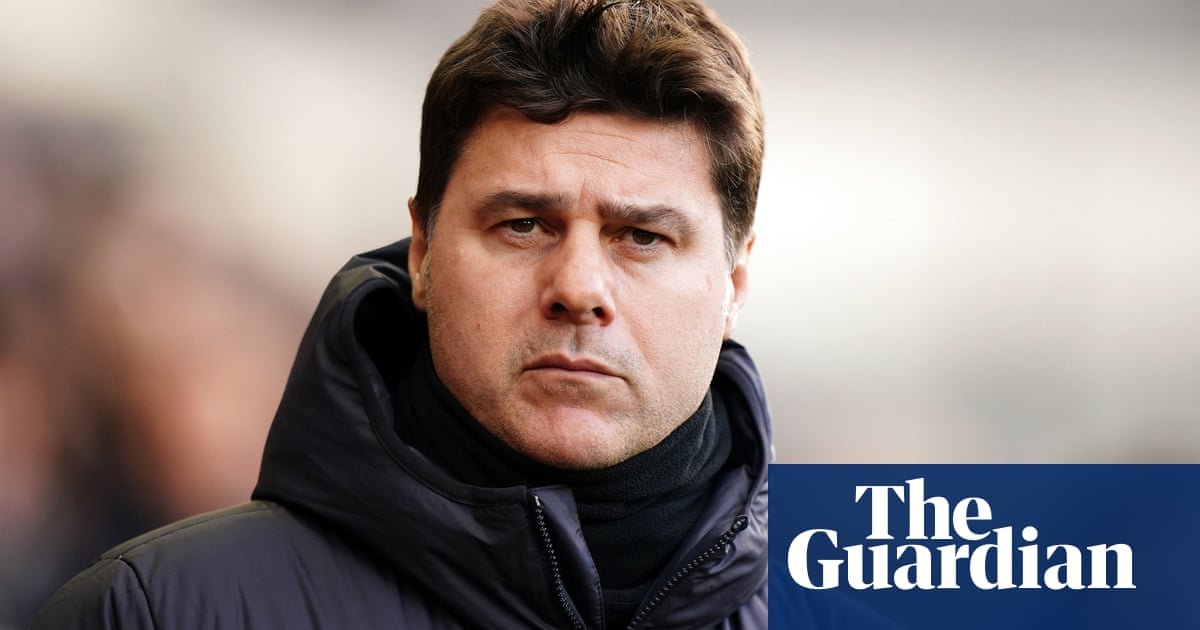When the US men’s national team players are introduced to Mauricio Pochettino, they will meet a coach unlike any the US has had in program history.
Pochettino, officially appointed on Tuesday, boasts an impressive coaching résumé involving some of the biggest clubs and players in European football, and has no history anywhere within the US soccer system. His profile is immense, yet his working style will be unfamiliar. The desire to find out what the new boss is like will probably color the players’ early interactions, down to the very first handshake.
Pochettino, too, will be seeking to learn at that exact moment.
“When you touch some people, you feel the energy,” he told the High Performance Podcast in 2020, describing how he gets an initial sense of his players’ mental state simply by shaking their hand. “You feel if it’s good, if they need love, if they’re upset, if they sleep well … you can have a lot of information that is so important [in order] to manage [them] … Negative, positive, you can feel everything. I think we all have the capacity to feel … that is the moment to create some link.”
As the new coach, Pochettino walk into a room with a kaleidoscope of feelings, one fresh of a drag showing at this summer’s Copa América that cost Gregg Berhalter his job. In one handshake, Pochettino may sense the emotions that come alongside the pressure to deliver on high expectations (Christian Pulisic), or the struggle to recover from injuries (Tyler Adams), or the desire to move on from some tumultuous professional years (Gio Reyna). Each player has their own story, motivations and feelings. Pochettino will need to navigate those long before he jots down his initial starting XI and begins working out how this team is actually going to play.
“Philosophy, methodology, style of football, these different ideas are not important,” Pochettino said on that podcast. “The players need to trust in you. Day by day – this is the only way [to build that trust].”
Pochettino will now be hoping to prove his 2020 self wrong; his success as US manager is predicated on building trust without that day-by-day contact, and in a wholly unfamiliar context.
For all of his great work at club level, Pochettino has never been an international manager before, and thus hasn’t led a group without the daily interactions he so clearly values. He has only previously managed one player currently on the US squad’s radar (center back Cameron Carter-Vickers during his early days at Tottenham). The broader talent pool remains high on potential, but Pochettino will have a limited ability to help the players fulfil it.
He must navigate all of this with an eye toward a daunting end goal: oversee a great showing from the Americans at the 2026 World Cup (whatever that means), and in so doing transform the sport in the country at large (whatever that means). He will be asked to do so as the first Latino and first native Spanish speaker of any type to hold the position – a remarkable fact considering how much of the country’s soccer culture has been built by those groups.
Navigating the US players’ personal motivations seems like small potatoes by comparison. Pochettino has led players from all over the world at clubs that must make the most out of what they have (Espanyol and Southampton), one with a bit more financial weight (Tottenham) and two financial powerhouses brimming with world-class talent (Paris Saint-Germain and Chelsea). The expectations at these clubs might be wildly different, but in each case Pochettino was able to achieve varying degrees of success methodically, raising the games of young players and ensuring that the collective group took to his tactics over time.
after newsletter promotion
Tactics, at least, are one area in which Pochettino won’t need to chart a ton of brand new ground for the US. Like his predecessor Gregg Berhalter, Pochettino almost always plays with a back four, encourages his teams to play out of defense, and prizes possession as a way to unbalance the opposition. Both managers encourage their wide defenders to push high up the field and join the attack, and Pochettino will have some interesting ingredients to do so in left back Antonee Robinson and, when healthy, right back Sergiño Dest (albeit without much depth behind either). The nuances of how these things are executed differs between the managers, but the wheel is unlikely to be reinvented.
The biggest difference between the managers aside from their levels of experience, then, is their closeness to the players. Berhalter brought the US’s current generation up at young ages, and acted as something as a father figure to their development. Pochettino, by contrast, has no such hangups. His teams must be connected. His players must play with intensity on and off the ball. If they don’t, they won’t play – regardless of how he feels about their handshake.
Adams posited in a recent interview that the US needed a “ruthless” manager. In Pochettino, they have one who could have more room than any of his predecessors to be exactly that.
But first, he must build trust.

